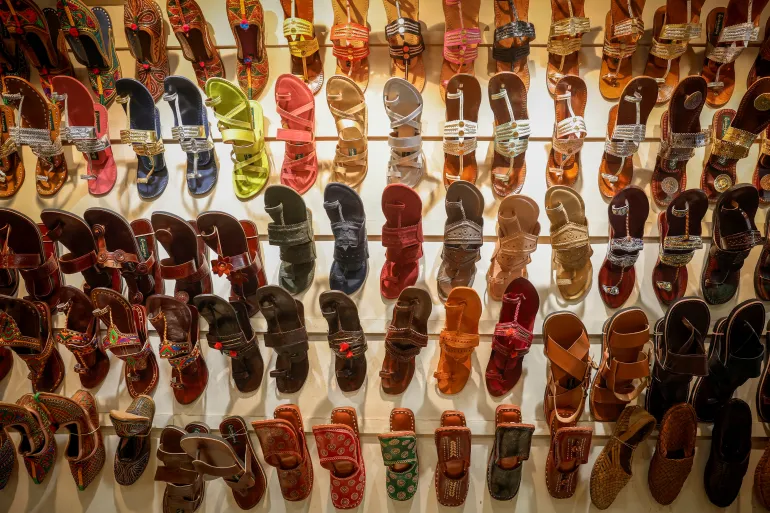Prada Cultural Appropriation in India: Why Luxury Brands Struggle

The controversy over Prada cultural appropriation in India highlights the disconnect between luxury brands and traditional Indian craftsmanship. Recently, Prada faced backlash after its Milan runway featured a toe-braided sandal resembling the iconic Kolhapuri chappal—a handcrafted leather footwear design with centuries of cultural history. The collection did not credit Kolhapur artisans, sparking outrage among fashion observers and Indian communities.
Prada Cultural Appropriation in India: Brand Response and Damage Control
Following the criticism, Prada issued a statement acknowledging the origins of the sandal and expressed interest in collaborating with Indian artisans. In a rare move, Prada representatives traveled to Kolhapur to meet local craftsmen and vendors to learn about the process behind creating these traditional sandals. The brand has hinted at possible partnerships with Kolhapuri footwear makers to ensure recognition of their craft.
A Larger Pattern of Cultural Appropriation
Prada is not alone in this controversy. Several global fashion labels, including H&M and Reformation, have been accused of borrowing heavily from South Asian traditions without giving credit. Dior also faced criticism for showcasing designs inspired by mukaish work, a centuries-old Indian metal embroidery technique, without acknowledging its origin. These incidents have intensified the conversation on cultural respect and responsible fashion.
Why Luxury Brands Struggle with India
India’s luxury market is growing but remains challenging for foreign brands. Analysts predict the market could double to $14 billion by 2032, driven by a young and affluent consumer base. However, many global brands still view India primarily as a production hub rather than a key luxury destination.

Industry experts argue that this perspective contributes to cultural missteps. Delhi-based designer Anand Bhushan notes that many luxury brands depend on Indian artisans for embroidery and craftsmanship yet fail to honor their heritage.
Cultural Respect vs. Exploitation
Critics emphasize that drawing inspiration from another culture is not inherently wrong, but acknowledgment and fair credit are essential. Fashion writer Shefalee Vasudev calls it “cultural neglect” when powerful brands profit from centuries-old traditions without recognizing the artisans who create them.

Indian craftspeople often work for weeks on intricate designs yet receive minimal wages or recognition. The lack of strong intellectual property laws leaves them vulnerable to exploitation by global companies.
The Way Forward for Fashion
Experts like Nonita Kalra, editor-in-chief of Tata CliQ Luxury, believe that the real issue lies in the lack of diversity in global fashion leadership. “Brands need people who understand different cultures,” she says. “This will help them avoid the blind spots that lead to cultural appropriation controversies.”
The Prada sandal controversy could serve as a wake-up call for India as well. There is a growing need to protect, market, and celebrate indigenous crafts rather than leaving them uncredited and undervalued.




